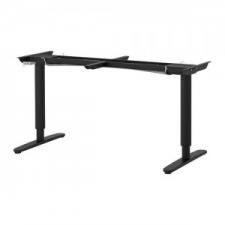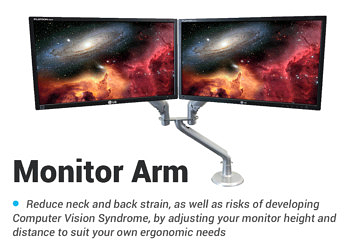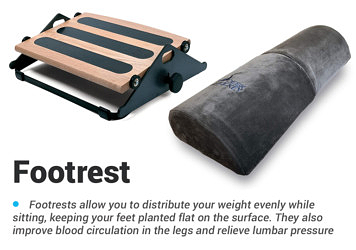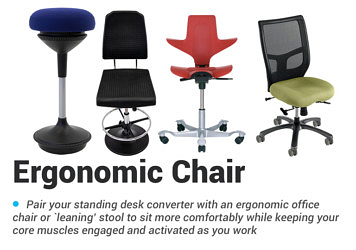IKEA BEKANT Standing Desk Review
- Forensic Review
Like most reviews sites, our editorial staff and laboratory testing expenses are partially offset by earning small commissions (at no cost to you) when you purchase something through those links. Learn More

Overview
| Review Summary |
The IKEA Bekant desk has been a problem-plagued product from the outset, with extremely poor ratings from IKEA’s own customers (2 stars last time we checked at IKEA ). With a weak 150-lb lifting capacity, a surprisingly light frame, and only one desktop size available, this desk comes in at the low end of electrically adjustable sit/stand desks. Consistent user reports of DOA failures or, in the best case, failure after a few days or weeks of use, compel us to give this product an unprecedented half-star rating. |
|---|---|
| MSRP / List Price | $509 |
| Street Price |
47.25″ x 31.5″: $509 |
| Shipping |
Varies by Zip Code, or pick up for free if you live near an IKEA store. For the greatest assortment of color options purchase online as inventories may vary by location. |
| Warranty |
10-year limited warranty |
| Lift Type |
Electric |
| Controller |
Basic Up/Down Switch |
| Sizes Available |
47.25″ x 31.5″ |
| Colors Available |
Desktop: Black stained ash veneer, white stained oak veneer, linoleum blue, white Base: Black, white |
| Adjustment Range |
Height range: 22″-48″ |
| Weight Capacity |
154 lbs. |
| Connectivity Features |
No Bluetooth |
| Shipping Weight |
Tabletop: 35 lb 8 oz |
| Power Consumption |
Unpublished |
| ANSI/BIFMA Certified |
No |
| NEAT™ Certified by Mayo Clinic |
No |
| Competition |
Compare to All Top-Rated Standing Desks
|
| User Reviews | See user reviews |
| Where to buy |
Buy on Amazon |
Rating
| Stability | |
|---|---|
| Reliability | |
| Customer Experience | |
| Quality and Aesthetics | |
| Innovation | |
| Value | |
| Suitability for Treadmill Desking | |
| Positives | Extremely cheap in basic configuration. 10 year warranty. |
| Negatives | Eerily consistent user reports of field failures within days or weeks of installation. The Bekant's specs are disappointing, to say the least. The meager 150 lb maximum lift capacity is insufficient to counter the side loading on a typical user's computer workstation. The base is designed for a 63" desk width; if you want a narrower or wider desktop, you're out of luck. Definitely not recommended for taller users or treadmill desk users, given its limited 48" top reach. When exceptionally good electric desks are available for only $100 to $200 more - with tabletops that'll look better and perform better over time, and come in many more sizes and colors - we don't see enough value in IKEA's latest offering to recommend it to our readers. |
Bottom Line
Editor’s Note: Our review of the IKEA Bekant sit-stand desk has been revised multiple times since our first write-up in February of 2015. With each revision we’ve had to lower our rating due to persistent reports from customers who purchased the Bekant only to have it fail, if not out-of-the-box, within weeks of installing the product. We’ve had to lower the rating all the way to the unprecedented bare minimum of 0.5 stars over time, given the consistency and persistence of these negative user reviews. In our experts’ opinion having reviewed dozens of adjustable height desk products, IKEA should recall this product. We’ve been saying so for the past three years. As we’ve stated from the outset based only on the published specifications, the motor and power supply system on this desk is severely under-powered for the application. Field reports have verified this fact beyond any doubt. While IKEA has a very strong consumer following, and people want to believe that a reliable adjustable-height desk can be made for this end price, our early predictions about the Bekant’s inadequacies and likely weak points unfortunately came true.

Independent of our review or any other review site’s rating of the IKEA Bekant Standing Desk, IKEA’s own website (as of May 10, 2018) shows 87 user reviews with an average 1.8-star rating, with many of the user comments reflecting the same issues our staff experts found, and many burned customers making emphatic pleas to prospective shoppers to avoid the product. Keep in mind that these reviews are curated by IKEA marketing staff, no one else. The company’s response to the product’s failure has been to drop the price $100, not to remedy it’s flaws. Beware of blog sites that have provided a non-expert positive review of the Bekant in exchange for a free product. If you don’t trust our expertise you at least owe it to yourself to read what IKEA’s own verified customers write about it.
An Affordable IKEA Standing Desk, But You Get What You Pay For
Note: IKEA has recently added a new, higher-tier electric standing desk called the Idasen. Be sure to check out our complete IKEA IDÅSEN Standing Desk Review and our separate review of the IKEA IDÅSEN Standing Desk Underframe.
IKEA, known around the world for its mass-produced, low-priced furniture, has re-entered the U.S. standing workstation marketplace with an electric adjustable height version of their Bekant desk (they haven’t sold their Galant line of electrically adjustable standing desks in the U.S. for several years).
If you’re looking for an affordable stand up desk, the Bekant might work for you. But before you run out and buy one we encourage you to read all the user reviews at the end of this expert’s review. If you’re looking for a long-lasting solution, we think you would be better off investing slightly more money in a higher quality adjustable height desk that will look better and last for many years, not a few weeks.
Since they introduced the Bekant stand up desk in late 2014, we haven’t been able to see the Bekant standing desk in action. So far, the desk has only been available in select IKEA showrooms around North America. Nevertheless, we managed to glean some interesting facts about the Bekant from the information available on IKEA’s site and from a plethora of early adopters’ online reviews. This review is therefore conducted under our process for forensic product reviews.
What exactly can you expect if you buy this desk? Short answer: a typical IKEA product strategy of cutting corners on components in order to achieve an extremely low price point. Most of us here at WorkWhileWalking are more than a little familiar with IKEA, having purchased, assembled, and in some cases subsequently replaced some of their furniture that didn’t stand the test of time.
IKEA designs their products to be as low-cost as possible. Raw materials are typically cheaply sourced, and many of the components are mass-produced in IKEA’s factories. Furniture is kept in flat boxes to save on shipping costs. Most notably, Ikea sells their furniture disassembled, saving storage and labor costs by relying on customers to put together their table or bookcase themselves. These furniture pieces, once assembled, often develop problems before long – components become loose and wobbly, wood warps, laminates wear at the edges, screw holes disintegrate. The furniture is meant to stay in one spot, so moving houses can exacerbate these problems even further.
Now, we don’t mean to cast aspersions on all IKEA products; this has just been a common experience for many users who have posted online reviews in the past, and it may not necessarily hold true for this particular stand up desk. That said, we have been able to acquire and test many other desks in the same price range, some good, some not so good, also reviewed on this site. The bottom line is until we can actually test the product in our labs we can only go by specs, photographs, and voluminous user reviews we were able to find online. And from what we see, the Bekant (along with the Autonomous SmartDesk) is the cost-cutting leader, but they clearly went a bit too far in the name of competitive pricing. For the gap in price between the Bekant and other desks we’ve tested in the same price range, the minuscule savings don’t seem worth the hassles that disenchanted customers are experiencing.
Note that this desk used to be included in our Top Stand Up Desks Under $400 round-up if you’d like to quickly compare it to other desks in its price range.
An Underwhelming IKEA Standing Desk

The Bekant Sit/Stand desk frame is a simple affair. The desktop is what we’ve come to expect from IKEA: a lightweight slab of particleboard with an inexpensive veneer or lacquer finish and PVC edging. Certainly not state-of-the-art 3D-laminated tabletop product, but we wouldn’t expect that from IKEA. The Bekant offers a very limited tabletop color selection of black stained ash veneer, white stained oak veneer, linoleum blue, or white, paired with either a white or black base.
IKEA seems to have taken this same cost-saving tack with their $399 base, as well. The Bekant base, which we learned is manufactured in Lithuania, adjusts with a no-frills up/down controller with a locking key.
The IKEA standing desk has an upper reach limit of only 48″, which while meeting the ANSI/BIFMA US government standard for sit-stand desks, is not going to work for anyone over 6’2″. Moreover, it will likely be shaky for anyone over 5’11” where the telescoping leg segments have insufficient overlap to maintain optimal rigidity. Most good bases these days exceed the ANSI/BIFMA limit by two to seven inches, to ensure stability for tall users (as well as treadmill desk users). But if you’re cutting corners, less metal in the legs and feet saves on material and shipping costs.
We were surprised to see that the specified weight of the base was a mere 57 lbs. Most electric stand up desks have heavy-duty bases that weigh between 70 and 100 lbs. The lighter weight could be a consequence of the lighter-duty motors used in the Bekant, or that the steel used in the base frame is of a thinner gauge than other, more rigid desk bases, or both. Either way, we have our misgivings. As a rule of thumb, heavier bases are more stable and reliable. The many user reports of motor failures in the field adds weight to our staff experts’ initial opinion that the motors are severely under-powered for the application.
The base legs are round, which some people find more aesthetically pleasing in a home decor than the much more common rectangular legs. The reason most manufacturers use rectangular legs in their electric bases is to increase the longitudinal stability of the desk (front-to-back wobble), so this is a slight trade-off of form versus function.
A Flyweight Among Standing Desks
 This IKEA standing desk has one of the weakest lifting capacities of any electric desk we’ve seen, with 150 lbs maximum lifting capacity. We’re used to seeing electric desks with lifting capacities upwards of between 220 and 490 lbs, and we’re concerned by the seemingly low power of the Bekant’s motors.
This IKEA standing desk has one of the weakest lifting capacities of any electric desk we’ve seen, with 150 lbs maximum lifting capacity. We’re used to seeing electric desks with lifting capacities upwards of between 220 and 490 lbs, and we’re concerned by the seemingly low power of the Bekant’s motors.
You may be thinking “all I’m putting on the desk is 40 lbs of computer equipment, so 150 lbs should be fine,” and this would be true if not for the fact that a) the weight of the tabletop must also be factored in, and b) virtually no one places all their desktop items exactly down the centerline between the two legs. In other words, side loading stresses must be overcome by the motors when items on the desktop are not perfectly centered. The heavier the items and the farther away from the centerline that they are placed, the more side loading is to overcome. The worst offenders in this regard are usually printers and monitor arms that are typically shifted to the back edge of the desk. (See our article “Do Weight Ratings on Electric Desks Really Matter?” for more information on lift capacity.)
Working on an Office Treadmill? Walk Away from this Stand Up Desk
Most stand up desks offer users a variety of sizes, but this IKEA standing desk only comes in a single size, meant for their 31.5” x 60” table top. If your home or office doesn’t accommodate that size, you’re probably out of luck (though you could by the Bekant Sit/Stand base alone and add your own desktop). In contrast, other bases in this same price range offer telescoping width frames that can be adjusted to support a tabletop anywhere from 42″ to 83″. The Bekant also has a published total width of 57.5”. There isn’t a measurement available for the width of the desk base’s feet, but most desk feet are close to 3” wide. Using that number as an estimate, we believe there’s about 51.5” of space between the Bekant’s legs, a good deal less spread than would be needed to fit a standard office chair next to a walking treadmill. For this reason, the Bekant is not suitable for sit-stand-walk configurations.
Without the taller reach or leg extensions offered on other electric desk bases all but the shortest of users are likely to have a shaky setup, if they can reach the keyboard at all, once a walking treadmill base is added underfoot. If you’re looking for an adjustable height desk for use as a treadmill desk our advice is spend a couple of hundred dollars more for something that will give you the reach and stability for a good user experience.
A Solid 10-Year Warranty, But You’re Likely Going to Need It
The only good news in all this is that the IKEA Bekant is backed by a 10-year warranty. IKEA’s guarantee to replace your desk should it fail out in the field is the Bekant’s saving grace. It comes down to whether the lower cost of the Bekant is worth the very chance – based on consistently negative user reviews – that you might someday be taking it apart, hauling it back to IKEA and replacing it with a new desk should anything go wrong with the motors. For more information on warranties, be sure to read our primer on How to Compare Warranties on Standing Desks.
Better Stand Up Desk Options
Budget-conscious desk users will no doubt be drawn to IKEA’s popularity and cost-saving manufacturing and stocking methods. But from both our own past experiences with their products, and from what we’ve learned about the Bekant during the course of our research, we don’t think IKEA’s philosophy fits well in the sit/stand marketplace. Standing desks – which have telescoping legs, precision motors, power supplies, and intricate gearing and transmissions – are more complicated than a chair or a bookshelf, and therefore require more consideration for their reliability and performance. As such, we think there’s a good chance you’ll find yourself needing to replace this desk after just a year or two.
Combine that fact with its poor specs and low weight, and the Bekant’s alluring $469 price starts to lose its luster. You might save some money now, but is it worth it if you find yourself going through the hassle and additional expense of replacing the desk in a few years? We don’t think so. Given that there are quality standing desks using sturdier and more reliable components available now for just $100 or $200 more, we’d say you’re better off paying a bit more now for a stand up desk that will last longer.
Many desks come with a grommet option, which is important to consider. Check out our article on grommet holes, with everything you need to know about the different ways to use them to enhance your workstation, what to look for in your grommet holes, and where to find the desks with the best ones.
What would we recommend over the Bekant, if you’re looking to save money on an entry-level stand up desk? The least expensive electric desk with an excellent rating is the American-made iMovR Energize, which will give you more than twice the lifting capacity, ultra-quiet motors with 220 lb lift capacity, an industry leading ten-year warranty, and a much wider selection of tabletops featuring advanced 3D lamination, fully-sealed grommet holes and a much more durable and visually striking color pallet, for only about $200 more. In the same price range are numerous other options from Jarvis, Uplift, StandDesk and others you’ll find in our Electric Adjustable-Height Desk Comparison Review.
Many standing desks and converters come with grommets for some added convenience. Check out our article on grommet holes for everything you need to know about the different ways to use them to enhance your workstation, what to look for in your grommet holes, and where to find the desks with the best ones.
Looking For More Standing Desk Reviews?
• American-Made Standing Desks






50 Comments
Leave a response >